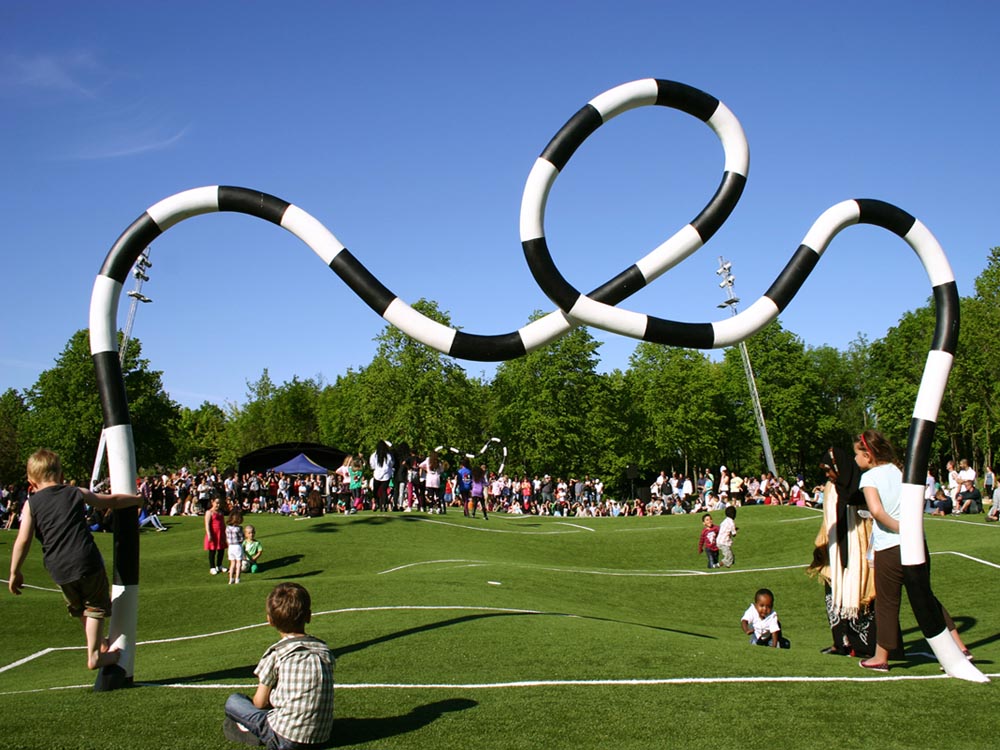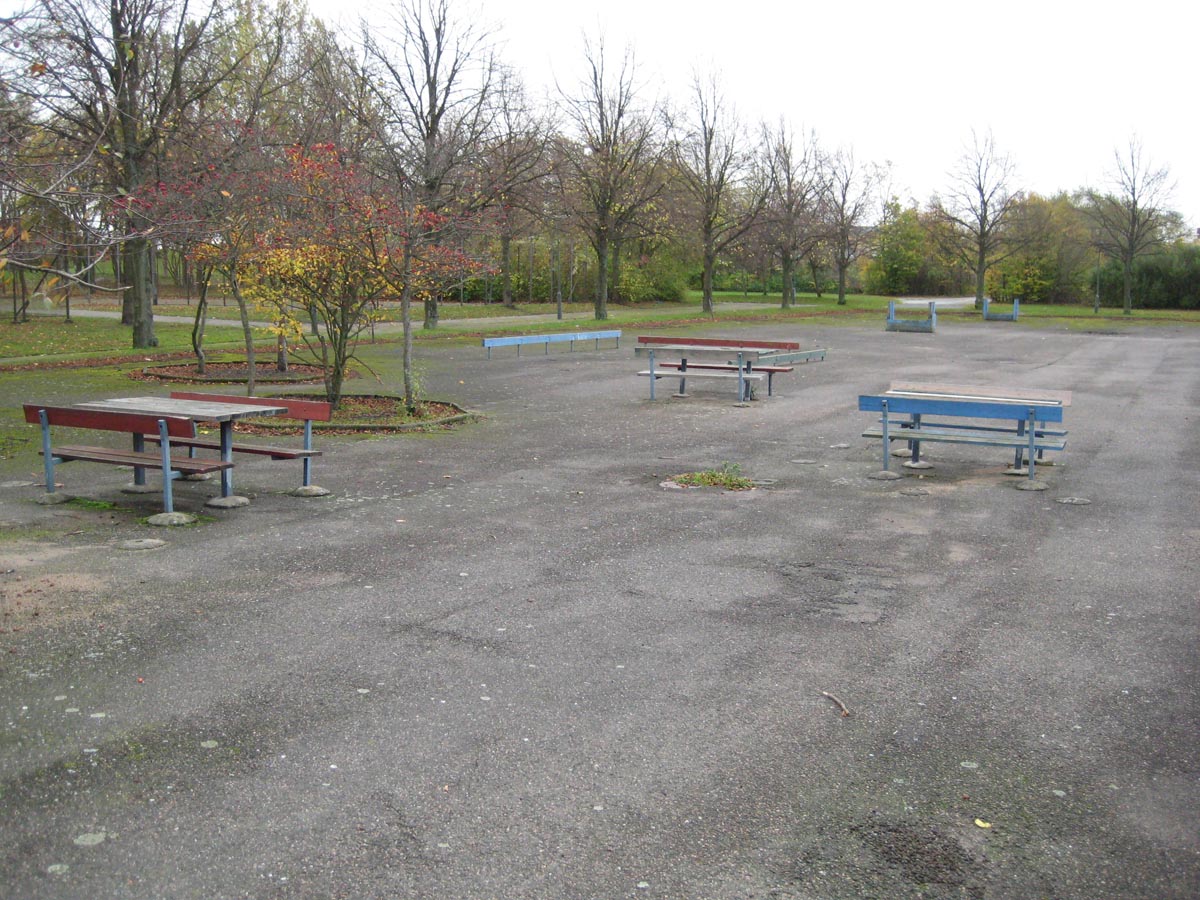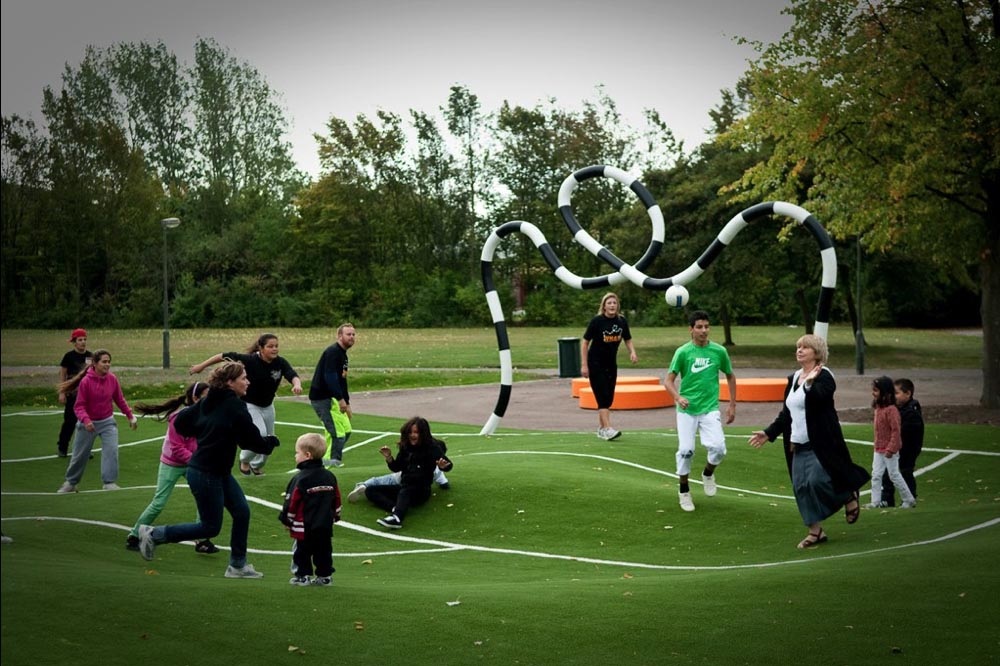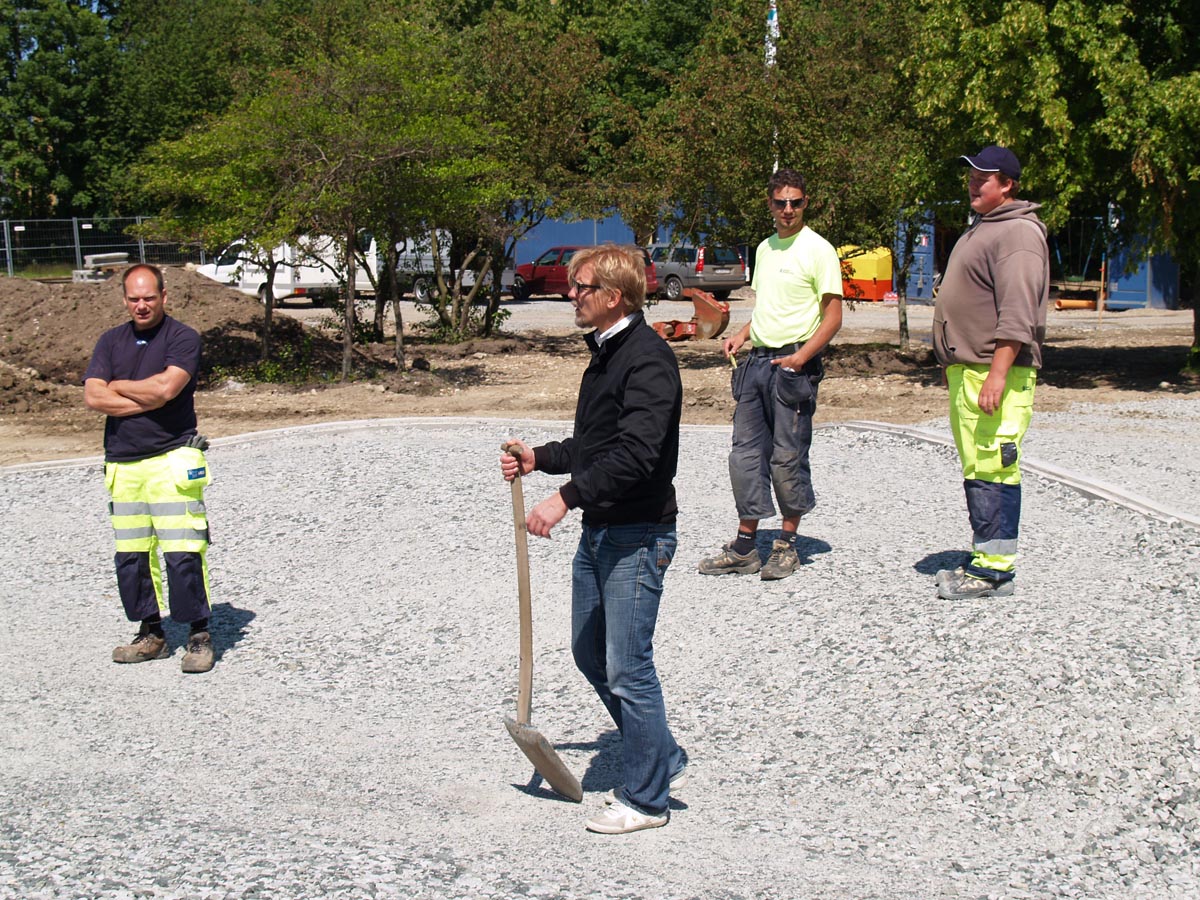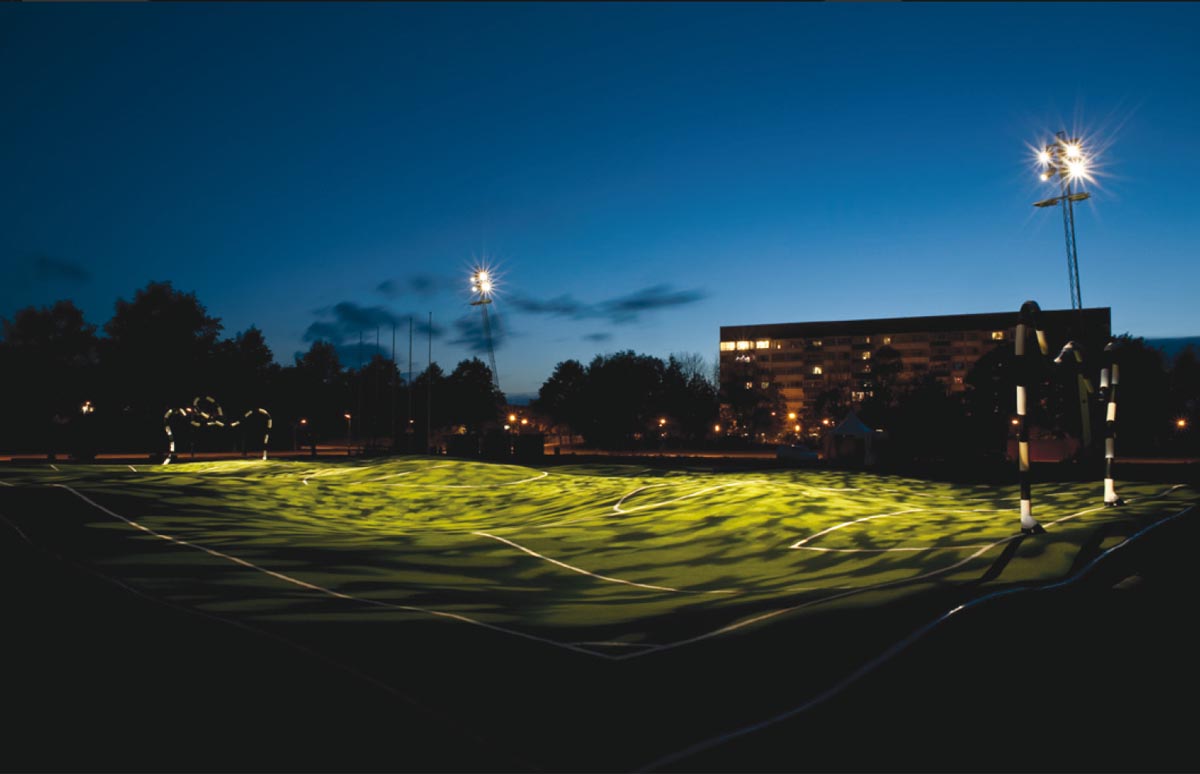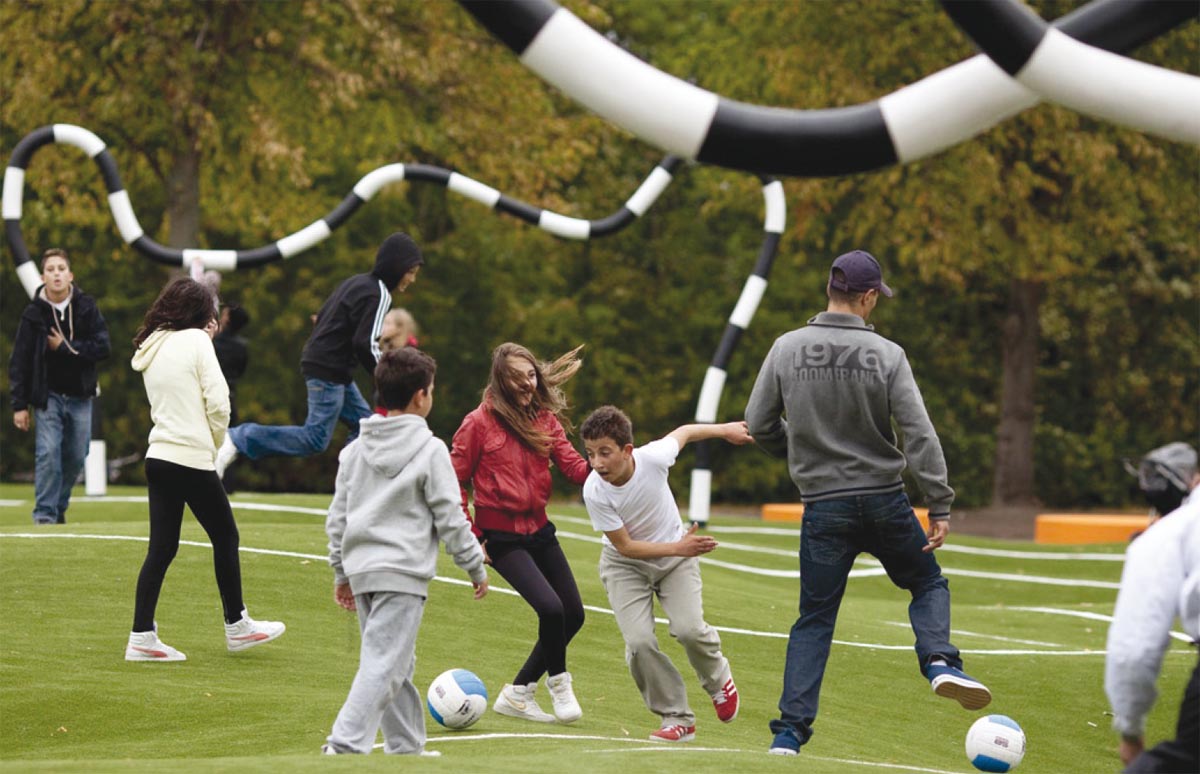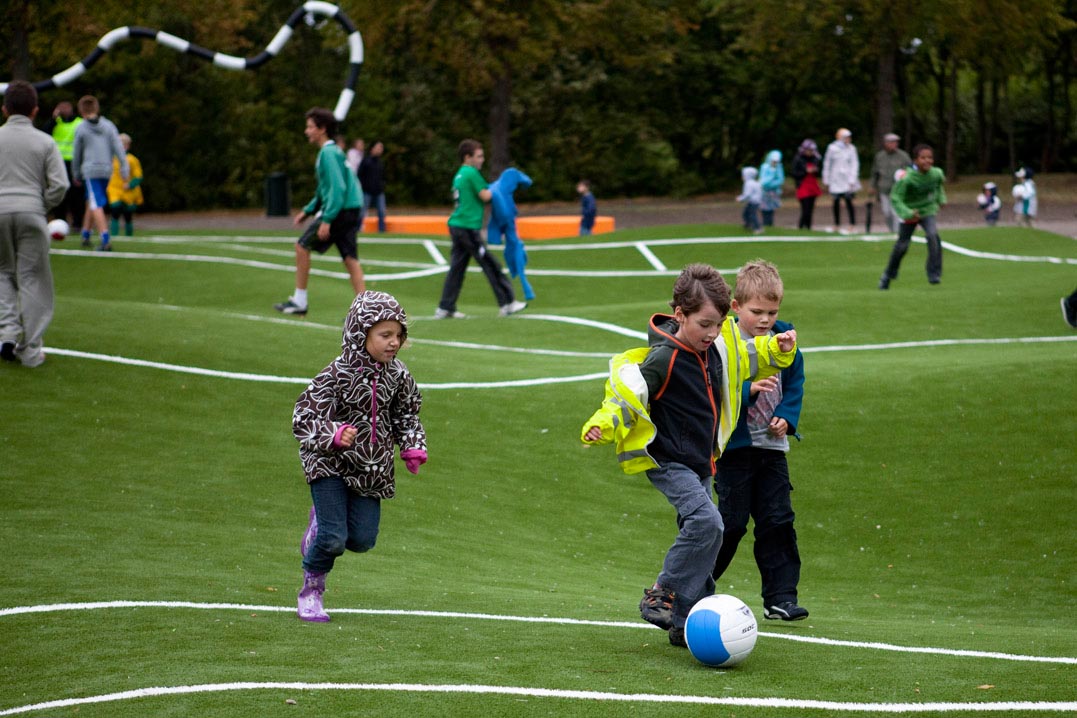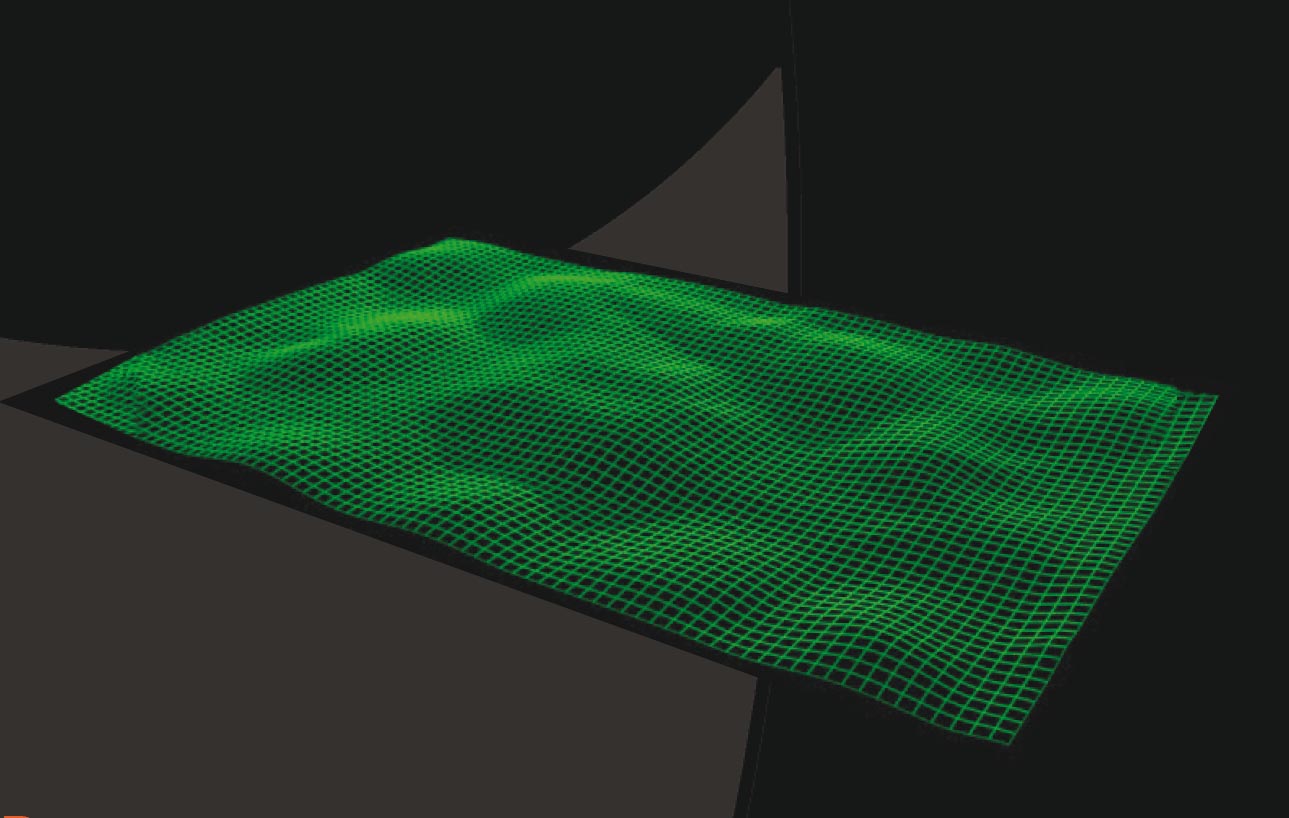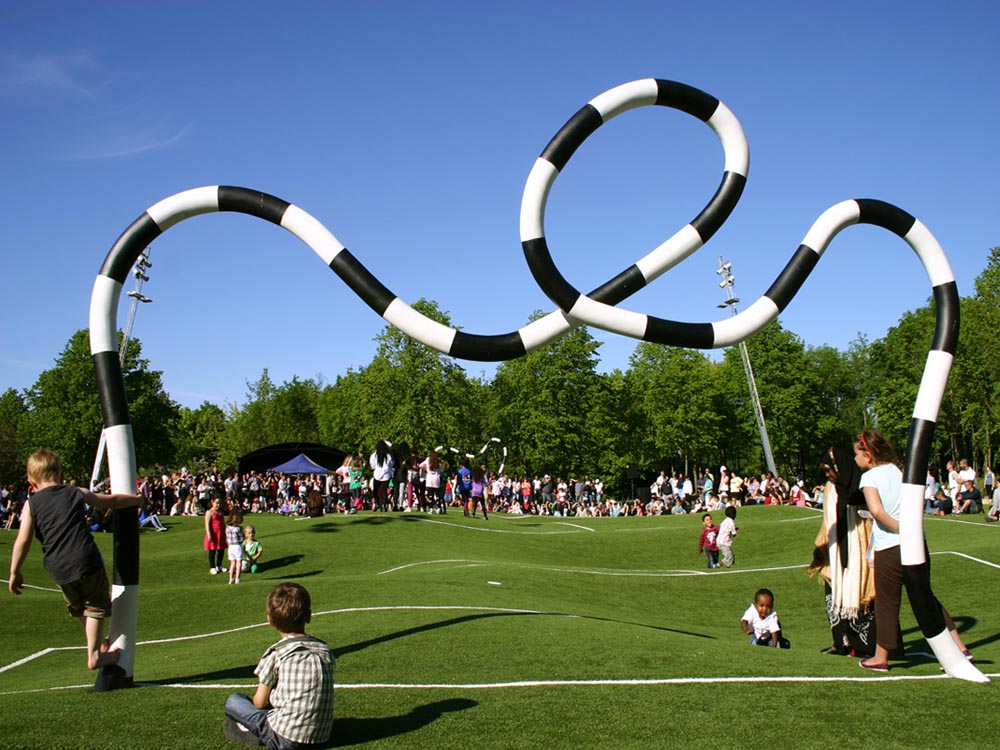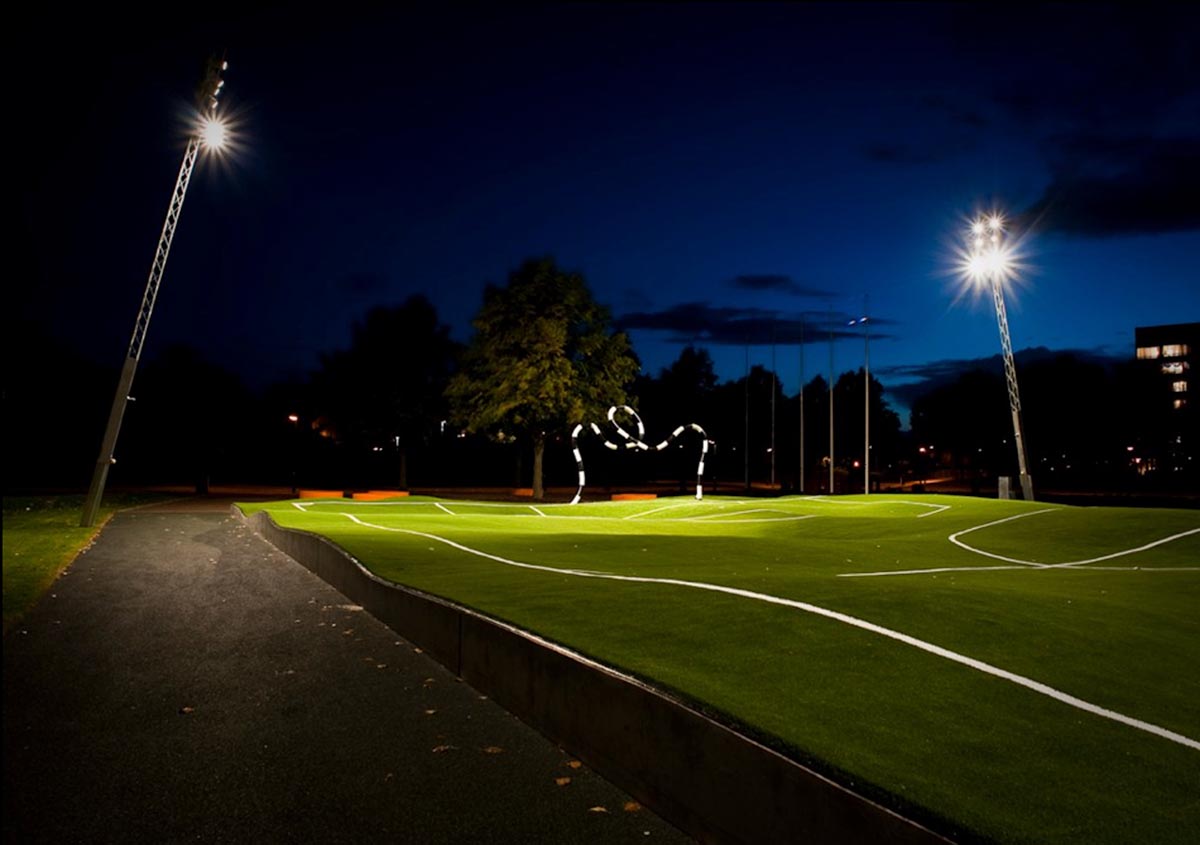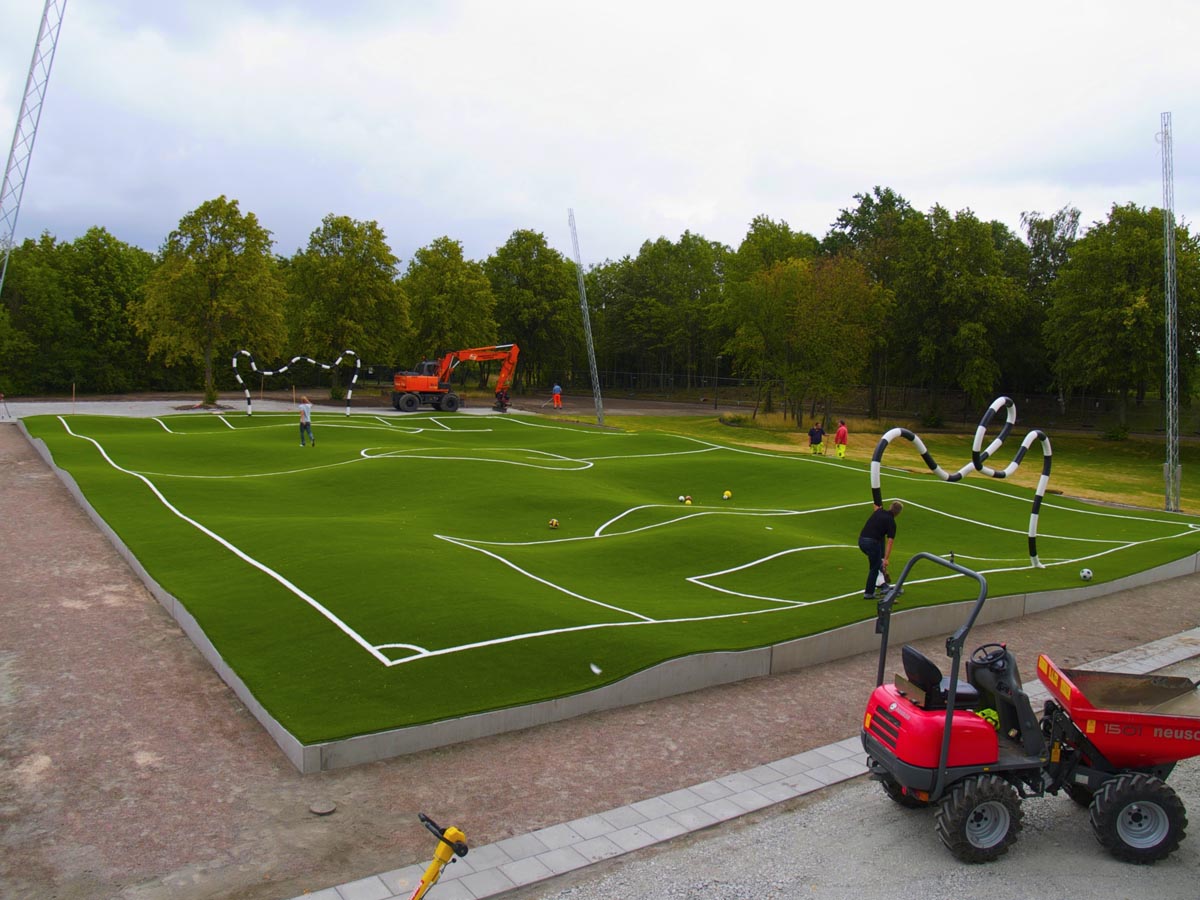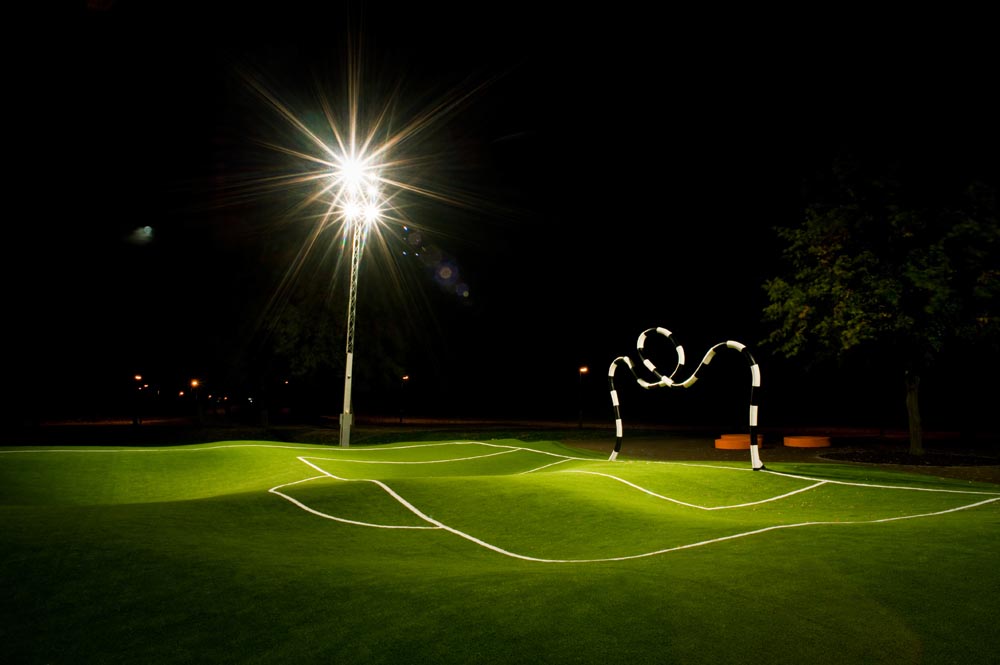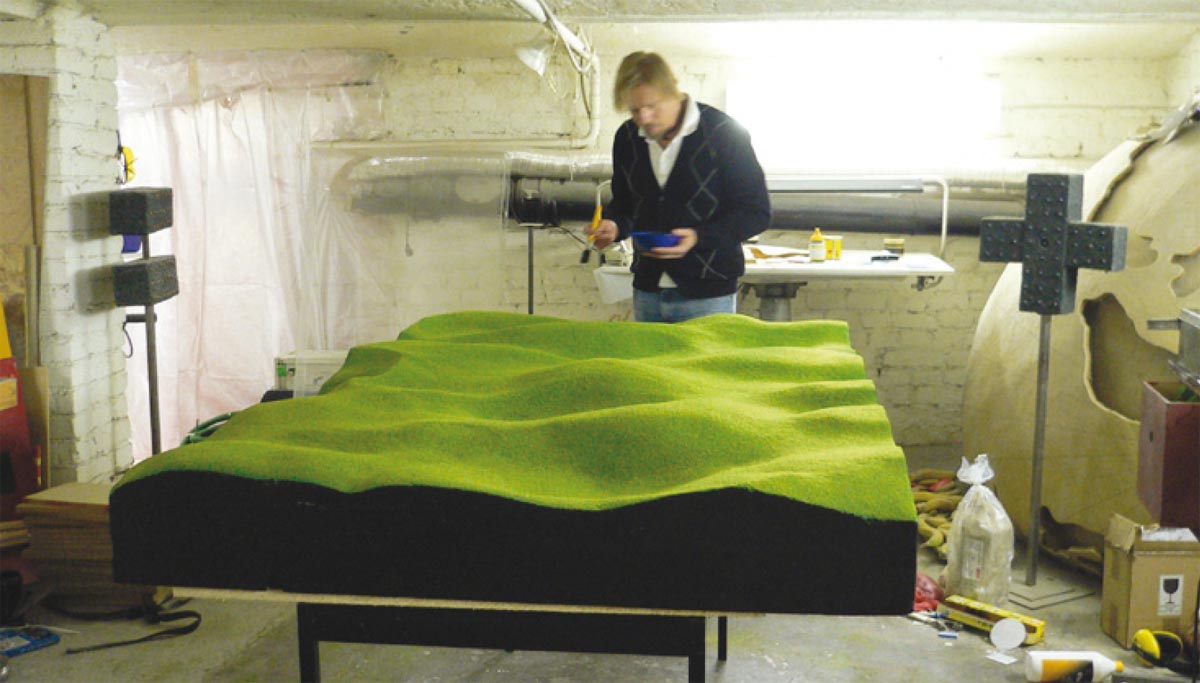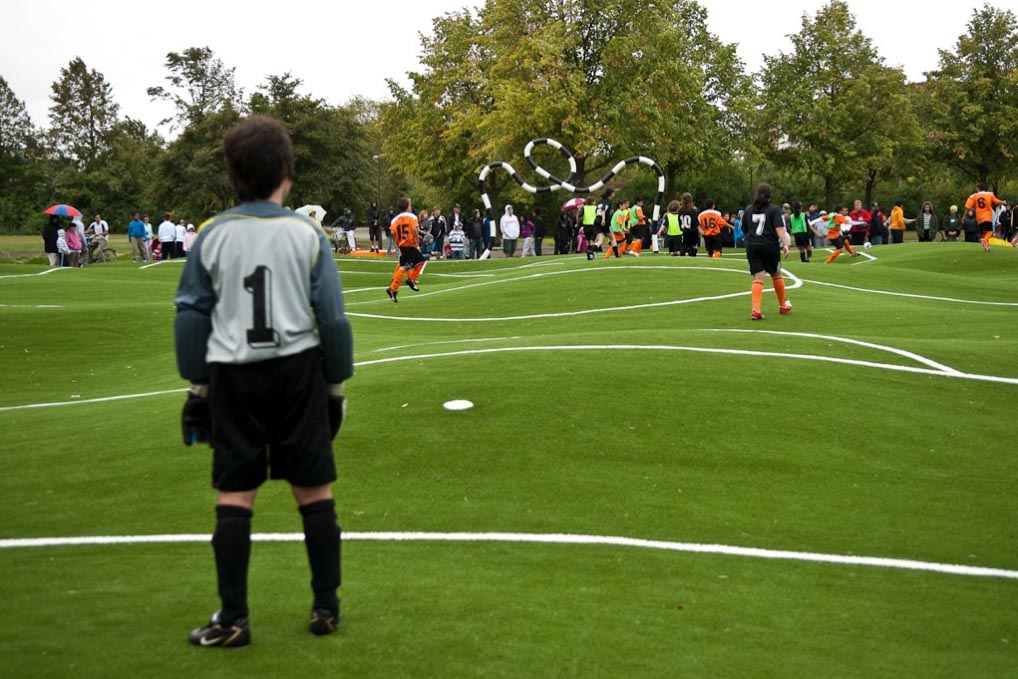Previous state
Although it is located on the outskirts of Malmö, the Kroksbäck housing estate is close to the city centre by bicycle. The estate was constructed in the 1960s and, a decade later, was provided with a central, twenty-six-hectare park consisting of artificial ponds and rolling grassy fields. All this, together with an absence of cars, which can only pass around the edge, and a great number of sports facilities ─as football fields and an ice-skating rink─ has encouraged a good number of students to move to live in Kroksbäck. The young people share the neighbourhood with an immigrant population from around the world, attracted by the affordability of flats, many of which are public housing or property of housing cooperatives.Aim of the intervention
The cultural diversity of the zone has given rise to a considerable number of initiatives aimed at social integration, frequently focused on children. Since the beginning of the century, the City Council has installed several playgrounds, which are outstanding in their unique, innovative style and their goal of encouraging shared outdoor activities by means of games and informal sports. In 2007, a Swedish artist was commissioned to produce a playing area along similar lines for the Kroksbäck Park. The installation was expected to combine aesthetic and artistic functions with the role of catalyst as a meeting point and place of interaction among different kinds of people. The former functions were to give representativeness to the neighbourhood, something to foster a sense of belonging and pride among the residents, while the second was to encourage harmonious coexistence and the pleasures of a public space when, with a climate like that of Sweden, people are not very often tempted to leave their houses.Description
The installation presented was called Puckelboll, which combines the suffix that characterizes ball games with the Swedish word puckel, which means hump. The facetious nature of the word is explained by the fact that Puckelboll is such a bumpy football field that, rather than being directed by a well-aimed kick, the ball moves haphazardly over its surface. This is a playing field of more than a thousand square metres, forty in length by twenty-five in width. It is covered by a carpet of artificial grass laid on a base of granulated rubber and gravel forming an irregular surface of hollows and hummocks of different heights.The four sides of the field, each of which has its own particular sinuous profile, have been produced by means of six-metre-long modules of prefabricated concrete. The goals, also different and made of fibreglass, have been sculpted in serpentine forms. Four high slanting and crooked lampposts provide lighting for the field at night. Before it was constructed, wear-and-tear and drainage tests were carried out using a square model of two and half metres of side. Residents and youth associations of the zone were invited to attend explanatory sessions during both design and construction phases and they participated actively in them.
Assessment
Once it had been opened to the public, Puckelboll soon became a major attraction for the young people and children of the neighbourhood as well as from further afield. On the one hand, the playing field is now a meeting point and place of social interaction which encourages people to opt for outdoor entertainment. In this strange playing field, rather than the rules of the game being governed by players’ skills, it is more a question of the whims of chance. This means that age and gender differences have little influence in the outcome of the games and, instead of constituting competitive, exclusive confrontations, the kinds are games it encourages are more like a shared experience, full of fun and surprises, inviting more imaginative forms of play. On the other hand, its eccentric photogenic forms have ensured that a peripheral housing estate, used to being overlooked, would for once become a focus of attention in the local and international media.David Bravo Bordas, architect.
[Last update: 02/05/2018]


